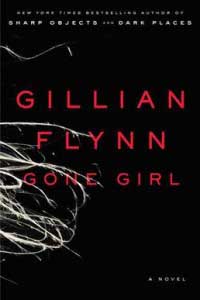“A gothic tour de force . . . An oblique and elegaic meditation on mortality and lost innocence.”
NO MAJOR SPOILERS
This was recommended to me a few months ago and if I’m honest I thought it was a love story. I don’t tend to go out of my way to find out what books are about before starting, I like to be surprised and I certainly was with this!
I think the most important thing about this book, and the thing that makes it work so well is that the characters are naïve and know nothing of the realities of the world, allowing you to learn along with them.
The book is told from the perspective of Kathy and starts during her childhood in a house called Hailsham and as a child narrator, she’s really unreliable. From pages 1 to 100 I kept puzzling as to what Hailsham actually is. Is it a boarding school? A home? Why don’t they do any normal school work, it all seems to be art. Maybe they are special needs and don’t know, I was really flummoxed.

Page one hundred, big gasp, the realisation of the novel sets in and you have an idea of what you’re dealing with, but the reeling shocks keep coming in this terrifying world that is not too far from the real world we live in.
Never Let Me Go is a beautiful breathtaking look at growing up, accepting fate, and the realities of life, of peer pressure, the fears of the unknown during childhood and of love.
Expect to ask moral questions, expect to wonder how all this could happen, but mostly when you get to the end, expect to learn what it is to accept whatever life throws at each and every one of us. A subtle tale of morality and acceptance, and highly recommended by me!
Reviewed by:
Kath Cross
Added 6th January 2017

NO MAJOR SPOILERS
Kazuo Ishiguro’s 2005 novel Never Let Me Go is categorized as dystopian science-fiction, but fans of Star Wars or Isaac Asimov would probably consider the novel to be a romance or a bleak-Victorian tome from across the pond. It is easy to see how Never Let Me Go could be easily dismissed by fans of the genre considering the love triangle that serves as the presumed only catalyst between the main characters Kathy, Ruth, and Tommy, who have grown up together in an alternative version of England during the final decades of the 20th century.
However, unlike other science fiction novels that choose to explore fantastical ideas or locations instead of developing the characters, Ishiguro’s focuses on character development in order to explore the morality and philosophy of our scientific world.
With the creation, development, and first person narration of the novels protagonist, Kathy, Never Let Me Go provides an empathetic understanding of the future while questioning the morality of this alternate world’s scientific advancements. In fact, it is through melding the main concepts of science fiction and romantic literature, Ishiguro successfully considers the potential consequences of scientific innovations, particularly on the emotions of three star-crossed lovers.
Never Let Me Go is narrated by Kathy, a ‘carer’ or nurse who spends her days looking after donors. As one of the better carers, Kathy is often sought-after by many donors, particularly because, in addition to her skills, she grew up in the fictional boarding school Hailsham. Kathy was lucky to have grown up at Hailsham according to the other donors, the majority of who grew up in different, un-named places. Effortlessly merging into memories of her time at Hailsham, Kathy thinks about the teachers at Hailsham, referred to as guardians. Kathy remembers her childhood: her best girlfriend, Ruth; the day she tried to help an overly emotional keep his shirt clean; that boy, Tommy, becoming her good friend; and Tommy and Ruth beginning a sexual relationship together. Interspersed throughout this standard character arcs are descriptions of Kathy’s life at Hailsham: the taboo against smoking; the freedom of sex because no students could sire children; and the pressure for each student to create art that is later given to another guardian and whisked away from the school. The explanations of Hailsham’s mysteries are identified in the novel, but in almost hidden ways. A brief discussion between Tommy and Ruth about what the guardians have told them or matter-of-fact statements about Kathy, Ruth, and Tommy’s futures that make the reader pause but barely slow down the narration. Kathy’s world, even as a child, is so normalized that one cannot predict when the reader will suddenly put everything together and discover that the scientific breakthrough in Kathy’s world was the development of creating human people for organ donations. Kathy, Ruth, and Tommy are clones whose only purpose in life is grow up healthy, donate as many organs as possible, and then end their lives with completion.
The scientific advancement at the center of Alternate England is the core of Kathy, Ruth, and Tommy’s being, but within their group, nothing matters but their thoughts and identities, a juxtaposition to the reality of their situation. To the outside world, the one that Ishiguro mentions only in passing, these clones are not people and do not need or deserve respect. Although the science behind cloning and the donations are not explicit, the novel nevertheless deals with the most important moral dilemma science, and society, must consider before the world enters into a new epoch: are clones human? Throughout Never Let Me Go, each character experiences the basic emotions of human behavior: happiness, sadness, fear, anger, surprise, and disgust. If you consider the moral dilemma through deductive reasoning, clones are human (All humans express emotions. Kathy et al express emotions; therefore Kathy et al are human). Choosing to focus on the individual clone through a first person narrative allows the audience to not only consider the ethics of clone and organ harvesting, but it allows the reader to experience the other side of that scientific advancement—the vital truths that society must consider before any major steps are taken.
Unlike Never Let Me Go, a more traditional science fiction story like Jurassic Park is easy to categorize, but regardless of focus on location and hard science, both Jurassic Park and Never Let Me Go share a similar theme—perhaps the most important philosophical and ethical theme in our world as reflected in the mirror of science fiction: [Scientists] were so preoccupied with whether or not they could that they didn’t stop to think if they should. Ishiguro chose to take this scientific moral dilemma and answer it not by focusing on the scientific achievement or the people that could benefit from it; he focused on the people, yes people, that the discovery will hurt the most. Now that you know what they think and feel, could you allow your society to walk down the same road?
Reviewed by:
Andrea Krottner
Added 26th September 2016







